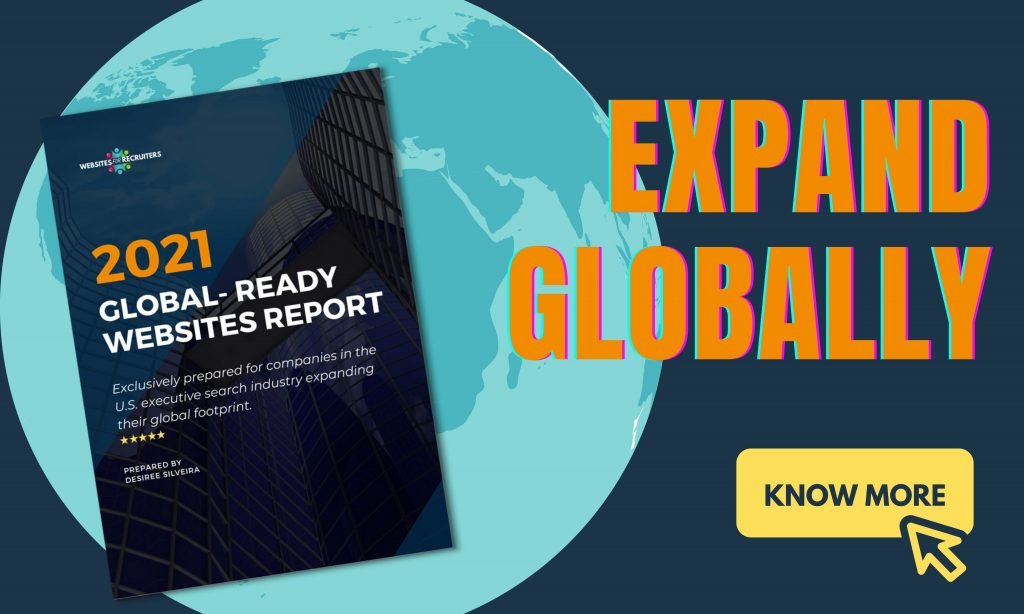According to the findings of a global survey, diversity & inclusion is a high priority for clients of executive search firms, and over half of executive search professionals believe they have a part to play in advising clients to choose a diverse short list.
Unfortunately, many executive search websites, while they preach about these priorities, they fail to demonstrate them through their website’s user experience. In most cases, it is quite unintentional, but for a global user who frequently visits global websites, they will quickly take cognizance of implied cues that certain cultures are given more priority than others.
Here are three situations that can indicate your company website is culturally-biased.
1. It assumes all visitors prefer English over their own language
English is the lingua franca in the International B2B community. Thus, it is safe for most executive search firms to assume that keeping the website in English is sufficient. However, culturally-diverse audiences do prefer to consume online material in their own language. Bilinguals tend to default to the language that is their native language.
Do we suggest more languages on your company website? Of course, if your company plans to expand in other markets. Firms that are just starting to expand may not be ready to offer language translation, and that’s alright, for now. Culturally-diverse visitors have their own online translation tools that they resort to, to interact with websites. This is extra work. Therefore, including translations should be prioritized and planned for.
2. The website prioritizes a few cultures
Executive search websites that have an internationalized web design strategy need to be mindful of using culturally-sensitive language, colors, graphics, visual representations that can indicate to a website visitor if their group is prioritized or not. For example, using images of people from the western culture gives the impression that the target markets are western countries. Websites like Google and Facebook, have therefore, limited the use of visuals or graphics and offer a clean user-interface experience.
3. The layout and navigation is not familiar
Aesthetics play an important role to create intrigue, however, it should not reduce the visitor’s ability and ease to engage with the website. Navigating the website should be intuitive and reaching the desired content should be accessible within the fewest clicks. Also, if the layout and navigation doesn’t reflect the familiar experiences of a global website, it can create confusion and even undermine the reputation of the firm.
Understandably, executive search firms want to get their services to the market as quickly as possible, but in order to offer best-in-class user experiences, cross-cultural design requires special attention. Great UX is rooted in the careful examination of social and cultural context, and therefore it is important that executive search firms employ the services of a web designer who is not culturally biased.
We have created the 2021 Global-Ready Websites Report that surveys 50 global executive search websites. Avoid expensive mistakes and create a web design strategy to demonstrate your global focus and win global clients.






